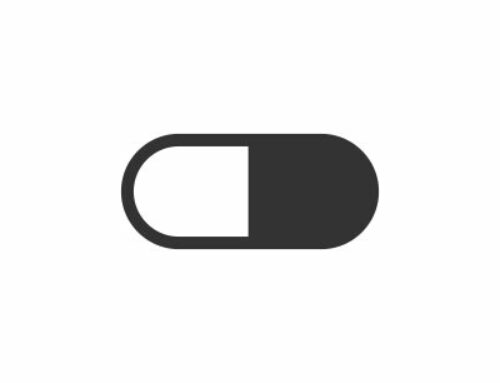In collaboration with O.L.G.A. Clinic
Why is the O.L.G.A. Clinic in St. Petersburg so successful for Scandinavian couples and single women wanting a baby with their own eggs; including those that may otherwise have given up!?
What is a good fertility clinic, and how do you decide which one is right for you?
The best fertility clinic is of course the one whose expertise is most likely to result in a healthy baby in the fastest time possible! But every patient is different, and because of this, it is also important to be able to identify your own specific needs with the help of experienced doctors, and then find out how the clinic can meet them!
The following patients visited the O.L.G.A. fertility Clinic in St. Petersburg for treatment after long struggles with infertility, and are now parents. Here, they explain more about their own personal journeys.
Maria @mariakristinlindstrom and Sebastian from Sweden explain:

“…After 5-6 ICSI cycles suddenly turn into 11-12 and you still don’t have the baby that you so long for, you stop and ask yourself the questions: — Can we really continue? Do we have the strength to do even more cycles and face the same possible outcome? Can we really brush ourselves down and start again when everything else around us is falling apart and our anxiety is growing even stronger with each failed attempt? The answer was almost certainly “No”– so we both agreed that we must try something else – but what?
So, in late 2017, and with very mixed emotions, we flew to St. Petersburg; to the O.L.G.A. Fertility Clinic.
We carried out an ICSI cycle using Marie’s eggs and my sperm, which resulted in our very first pregnancy. However, sadly, this was to end in a miscarriage. But we were not deterred and confidently returned for a second cycle which again resulted in a pregnancy, this pregnancy was normal and will be a very happy memory that we will treasure. Finally on 26 January 2019, our beautiful son arrived.
Of course, looking back, we wish that we had visited St. Petersburg at the beginning of our journey, so that we could have avoided the 12 egg retrievals and ICSI procedures, the 16 unsuccessful embryo transfers, and the 4 inseminations with donor sperm.”
You can read more about Marie and Sebastian’s journey here: https://olgafertilityclinic.com/en/about/successtories/maria-sebastian/]
So, you may be asking, why did this couple achieve implantation this time after so many failed attempts before? What was done so differently that their baby finally arrived after so many previously unsuccessful treatments?
Sebastian recently discussed these very questions about his and Maria’s own fertility journey with Drs. Elena Lapina and Olga Zaytseff. He also asked what was done so differently in St. Petersburg, and how had this led to their success?
– By creating a highly individualized ovarian stimulation protocol for Maria, we produced strong and competent eggs.
– Our laboratory is home to some of the field’s top embryologists who carried out the ICSI procedure.
– To create the highest quality embryos, they were grown to a blastocyst stage (day 5). Those blastocytes were then gently frozen using vitrification – this freezing procedure has a 95% survival rate at the O.L.G.A. Clinic, and its purpose is to “put time on hold” for the embryos whilst the team move their focus to optimally preparing the endometrium for the embryo transfer.
– After allowing a cycle break, gentle, smooth hormonal treatment was used to prepare Marie’s endometrium, this treatment also allows for precise scheduling of Marie’s implantation window – which greatly increases implantation rates.
– The embryo transfer was carried out with guided ultrasound and followed by gentle hormonal support monitored by the doctors at the clinic until the time that their very precious embryo was strong enough to attach and take care of itself.

Here, former patient Lina @maybebaby_2019 explains about her own personal journey to motherhood:
In 2015, Lina made her first visit to a Stockholm based fertility clinic, it was at this point that she would learn that she had a low AMH (AMH is a marker to show ovarian reserve). On receiving the news, Lina realized that she needed to act fast if she was to have children of her own before her egg reserve and time ran out. Lina’s first treatments were carried out in Denmark, but sadly after 6 failed insemination cycles, she was forced to move to IVF if she was to stand a chance of being successful. But three IVF cycles later, and Lina was still not pregnant. Instead, she would try egg donation in Spain, a further 2 egg donation cycles and still no pregnancy or much awaited baby.
However, following her very first IVF attempt using her own eggs, at the O.L.G.A. fertility Clinic she gave birth to a healthy baby boy!
You can read more about Lina’s journey here:
https://olgafertilityclinic.com/en/about/successtories/lina-story-ivf/
So, what was it that made all the difference in her treatment cycle at the O.L.G.A Fertility Clinic?
In Lina’s case, by using a slow and longer stimulation process, with adjustments to the medication dosages when required, we created 11 mature eggs ready for fertilitsation. Eight of these eggs fertilised normally, creating 5 blastocysts with good morphology. (In Lina’s previous 3 IVF attempts, she only had a 20% fertilisation rate and just one two-day embryo from all three attempts combined).
Drs. Elena Lapina and Olga Zaytseff analyze what has probably helped most in Linas case:
– Individualized ovarian stimulation aimed at production of competent eggs with sufficient levels of energy. During the first two weeks of the cycle until ovulation, eggs need to multiply their energy resources hundreds of times. Clearly enough — energy is needed to create a viable embryo.
The source of energy for a cell is mitochondria, small organs inside the cell cytoplasm. Mitochondria, and hence energy resources for embryonic development come solely from the egg — a sperm does not bring anything more than condensed DNA. Possibly for that reason may short, high dose protocols not allow eggs to gather enough energy for fertilization and embryonic development after retrieval. If protocol is too short, immature eggs will be collected, which may fail to become fertilized and develop – eggs mitochondria simply did not manage to multiply in sufficient amounts.
– We also performed a hysteroscopy which showed chronic inflammation. To counteract this, we used antibacterial, antiviral and immune therapy before the embryo transfer.
– In Lina’s case, there were several factors that were influencing her fertility and chances of pregnancy, so we had to work one step at a time to address the: egg quality, chronic inflammation and immunological issues.
To create the very best chances of success for Lina, we split her treatment into the following three steps:
- Step one –The team’s attention was focused purely on Lina’s stimulation process to ensure high quality, superior eggs and then the creation of viable blastocysts. Having top-quality blastocyst embryos ready for the transfer stage clearly dictates whether we proceed to step two.
After creating these top-quality embryos and freezing them by vitrification, we safely stopped time for them. During the time created by the freezing process, we optimally prepared Lina’s endometrium ready for the transfer of her embryo and its subsequent implantation. - Step two – Further investigations were carried out by hysteroscopy so that we could investigate the micro-environment in Lina’s uterus. By surgically treating any minor problems that were found, and then using antibiotic, antiviral, and immune therapy, we assisted the endometrium in establishing the necessary relationship in the future when her embryo was transferred.
- Step three – We thawed Lina’s frozen blastocyst and transferred it at the most optimal time in the implantation window that we had carefully planned and created.
My visit at the O.L.G.A. fertility clinic
O.L.G.A fertility clinic not only offers superior and successful treatment for patients requiring IVF treatment with their own eggs and sperm, but also the same high level of support and treatment to women and couples that require egg donation, sperm donation and embryo adoption.
So, what is egg donation and who is it suitable for? Importantly, how can you decide if you should start another IVF attempt with your own eggs or move to egg donation?
In order to learn more about the egg donation process and answer these two very important questions, I visited the O.L.G.A Fertility Clinic in St. Petersburg to find out as much as I could first hand.
The medical director of the clinic, Dr. Olga Zaytseff, had previously studied in Germany. Her closest collaborator, Julia was also fluent in German, as well as several other team members who were always ready and willing to help. The rest of the clinic’s staff (approximately 70 in total) spoke all other main languages, so for several days, I didn’t stop talking and asking questions.
When I first arrived at the clinic, various talks and presentations were already in progress.
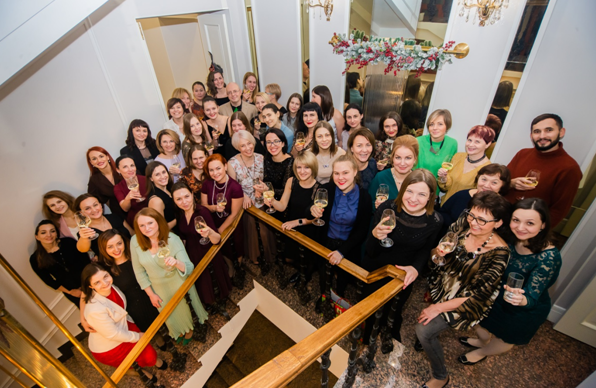
I first met Maria, the clinic’s native Swedish coordinator, who is in charge of the many of the Swedish patients that visit–
The number of Swedish patients has increased and continues to grow since the famous podcaster Cilla Holm shared openly in her Podcast (“Jag Vill Ha Barn – I want to have a baby” play.acast.com/s/jagvillhabarn ) how she herself had had a baby through embryo donation at O.L.G.A. Clinic has also since this been featured in several female magazines and also on TV https://olgafertilityclinic.com/en/press/.
Another reason this clinic is so popular among Swedish women is that many of its donors have a typical Nordic phenotype – blue eyes and blonde hair.
During the presentation, slides of patients that have been open about their donation treatment were shown with the donor pictures they received when attending the clinic for treatment. These pictures of both donors as children and the recipients in childhood and adulthood, along with their children created through the treatment process, show the amazing similarities between the two. The children now healthy and happy, have a striking resemblance to their mothers, and proves that the clinic can clearly provide superb matching among their donors and the recipients.
It was also explained how egg donation recipients receive in-depth information about their egg donor: photos, motivation letters, family history and much more. All donors also have children of their own – a sign of proven fertility and mature understanding and motivation to become an egg donor. You can view egg donor catalogue here – please request access at https://eggdonorideas.com/eggdonors/
So how has the O.L.G.A grown possibly the largest egg donor database in Europe?
In Russia, women are still more likely to become mothers to their own children at an earlier age, Russian women are more open to being donors due to inherent views on donation and are quite likely to have northern European phenotypes.
All donors are mothers of at least one healthy child, and many have completed their families before a typical western woman would have finished their university education, these Russian women then go on to develop their own education and careers once their family is complete.

However, in some countries, egg donation is still a secretive topic.
In Germany where I live, egg donation is entirely prohibited (though sperm donation is open to both hetero- and homosexual couples, as well to single women).
In St Petersburg during my visit, I was overwhelmed with transparency and openness that surrounds the process.
There isn’t a single question that comes to mind that someone can’t answer first-hand. However, this is no wonder as many of the staff have been part of the team for many years and several of the staff have been egg donors themselves before, and so they understand the process from both sides. Conversations are extensive and at the end, I always heard: “if you’d like to know more you can also ask Alena…Anna…Julia …….” Everyone was always willing to help!
If I was to tell you just one of the many things I learned whilst at the O.L.G.A Fertility Clinic, it is that: Female power is a real thing.
Everywhere I looked in the clinic, I saw women; women who have built a world-class fertility clinic from scratch. Women who are top of their field, highly educated and are willing and able to apply their knowledge in the creation of much wanted babies all across the globe. Women who have their own families and now help others build theirs.
I looked around fascinated at how dozens of female doctors, nurses and coordinators work and move around as in a busy beehive, and was in awe of how there can be so much excellence in one place.
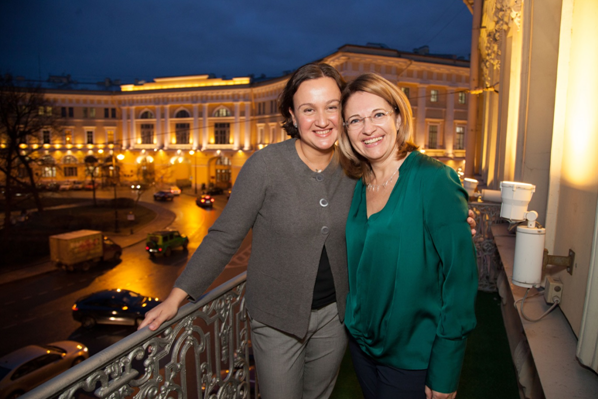
Photo: Clinic owners and leading doctors Olga Zaytseff and Elena Lapina.
One of the many highly skilled team member is Dr. Elena Lapina, a renowned doctor who created the first baby in Russia after ovarian tissue transplantation in a cancer patient (after chemo- and X-Ray therapy) in 2014.
Now I’ll take you to a place you’ve never been to before. Together, we’ll visit the IVF laboratory of the clinic.
The IVF lab is always the heart of every fertility clinic. It’s like the cockpit – the control centre where embryos are being made and evaluated. The Laboratory is the first stop where your eggs are brought after the retrieval.
Embryologists work there with immense concentration, moving around the lab in a slow and focused manner, aware that many times, one single decision can mean a difference between life and death, between the couple becoming or not becoming a family, between happiness and despair.
How an embryologist makes a baby
Maybe it’s because I’ve worked in a lab for 13 years, but the embryologists didn’t seem to mind having me around whilst they were working. During my two days in the lab, I addressed them with a million questions!
Svetlana Shlykova is probably the most famous embryologist in Russia, from 1996 to 2018, she was the chief embryologist of AVA clinic network.
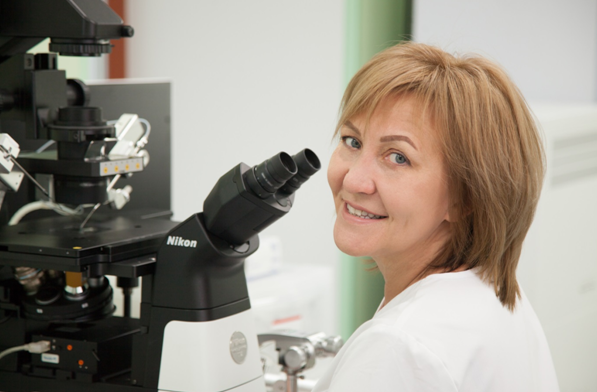
Dr. Svetlana Shlykova
Her colleague Anna Gusareva came from Moscow to work together with Svetlana. The youngest embryologist Maya Shestakova is still learning, but had a lot of patience and time for discussions that I created – even if sometimes they were slightly metaphysical.
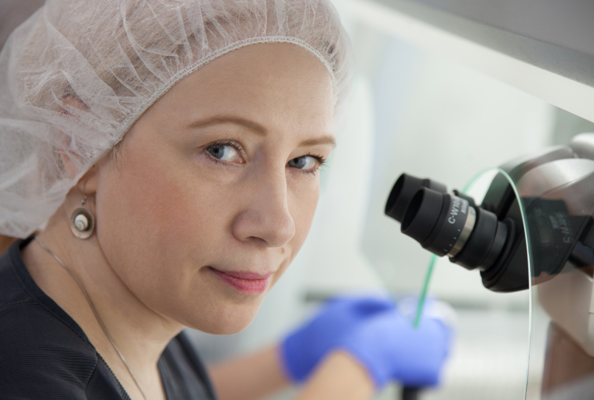
Dr. Anna Gusareva
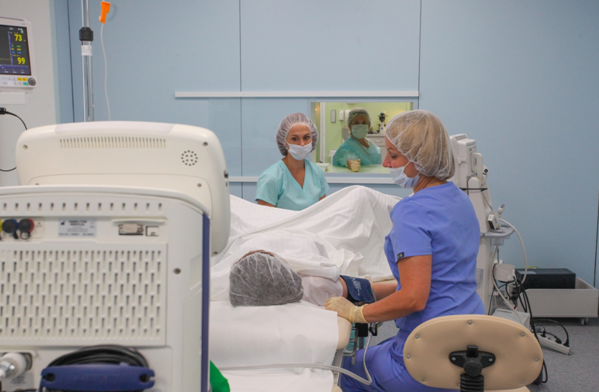
At the very beginning, I was positively surprised that embryologists sit on the microscopes next to the open window that joins the surgery room, so that eggs can immediately be examined and taken care of.
Anna inspects freshly extracted eggs and sperm and confirms which treatment will be performed IVF or ICSI?
In any patient’s treatment it is the embryologist who decides on the best way to create an embryo; ICSI is only used if chances for IVF success are low.
I like that.
Please note that this is very different from the routine procedures in most clinics where all eggs are automatically subjected to ICSI procedure, even when this is neither a necessity, nor benefit to the patient. O.L.G.A embryologists avoid unnecessary intrusion into an egg if possible.
Anna explains to me: “Our patients can have program packages with a guarantee of live birth; if a baby isn’t born within the package, we return 80% of the money back; we have own egg IVF, donor egg, donor embryo or combination packages all with the same live birth guarantee. Our patients know that the clinic shares their success and shares their risk; we have mutual motivation with our patients – a baby in the patients arms in the soonest time possible, with minimal necessary intrusion into biology and genetics.
I prefer IVF because it’s somewhat more “natural” – the egg and the sperm cells decide themselves whether to fertilise or not, and with which sperm to do the fertilisation. With IVF, fertilisation rates are 87%, so why not give IVF a chance and only carry out ICSI when it’s necessary? Such in the cases of mild sperm issues, and all other possible scenarios that have been discussed or diagnosed before the treatment cycle?”
I like that line of reasoning – ICSI was originally created as a procedure to relieve male infertility, so why not keep it for that?
Then we talk about declining male fertility in the Western world and how most embryologists agree that sperm is not what it used to be 20 years ago.
Anna explains to me how embryologists are involved in all sorts of procedures around the eggs, sperm and embryos and how on some days, there is a great deal going on in the lab, even on weekends.
Whilst I am there, I keep my eyes on Svetlana.
Her movements have similarity to that of a Lioness – she radiates a perfect sense of having things under control, whilst she’s processing embryos and moving them from deep freeze into the world, awakening the life of the cells when delivering them from the internal peace of – 200 degrees.
At one point, I asked her “how many sperm do you layer on top of the egg when performing IVF?”
She thinks for a moment and then answers, “Even that is individual”. There are numbers and protocols, but the best answer is to have a good gut feeling also. The same number of sperm can be too many or too little for one particular egg. I like to think that a drop of the sperm should look like a starry Sky beyond the egg“.
In recent years, O.L.G.A is establishing a reputation as the “Best choice for couples and single women for having a baby with their own eggs”. Due to the enormous experience of its fertility doctors, there are hundreds of babies being conceived and born from the eggs of mums of advanced age! Here you will find many testimonials https://olgafertilityclinic.com/en/about/successtories/
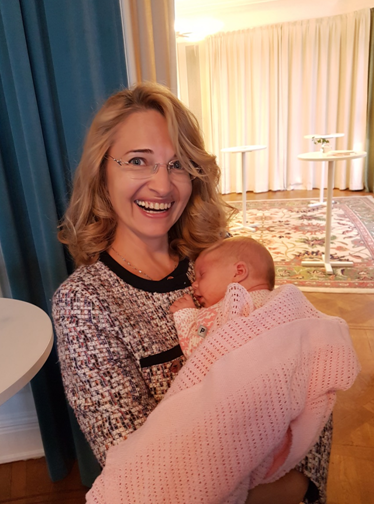
Here Dr. Elena Lapina is holding a baby born after its mother previously lost four pregnancies. There are also many more stories of babies born on the very first attempt with own eggs, even after several unsuccessful IVFs in Denmark or Spain. O.L.G.A also offers fertility packages with your own eggs and money back guarantees on live births. I personally find this to be a perfect option for couples who may be exhausted after a long struggle with infertility and need peace of mind and a sense of security that the end of their journey will be successful.
The O.L.G.A Fertility Clinic has vast expertise in embryo diagnostics
It is often difficult to identify which one out of several good-looking blastocysts have a normal number of chromosomes and the needed developmental capacity to develop into a healthy baby. That’s why it may be advisable that women who are 36 and older, or have several blastocysts for transfer, make PGT-A to achieve a higher chance of pregnancy and birth rate with the first attempt, instead of transferring all available embryos throughout several cycles.
How is embryonic testing done?
There are various methods. However, the most commonly used is PGT-A (preimplantation genetic testing for aneuploidy).
How is this test performed?
On day 5 when the embryo looks like a ball of about 150 cells, a tiny sample of about 4-6 cells is scratched from the surface. This is important to know, because many women worry that PGT-A will hurt the embryo.
Biopsy for embryo diagnostic is not taken from the inner cell mass, but from the part out of which the placenta will grow, so the embryo is not being hurt. Following the genetic analysis of the sample, doctors can know whether there is the right number of chromosomes in the cells and if the embryos are “euploid”, which means “genetically normal”?
Egg donation – when is a woman a mother?

On my last day in the clinic, I speak to Anna Macarova – the egg donation coordinator and a team leader who also runs her eggdonationblog.com. I want to know “what is it that women want to know most when it comes to egg donation?” “What are their deepest concerns”?
Anna tells me “It’s generally the information and understanding of the process. They need to understand the terms and need to learn the facts related to social and biological motherhood.
They have questions around who the real mother is. Is it the one that a single cell derives from? Or is it the one whose body initiates the life of a child, the one that enables a baby to grow in her belly. The one who gives birth, breastfeeds, and cares for the rest of her life? In our conversations, we always notice how the couples relax and feel at ease when they take a step back from being fixed on the female biology.
One thing is sure: our patients are tough people! They don’t come to us because they want to create designer babies or want something that other couples don’t have! Our patients often come to us when they are exhausted, vulnerable and desperate at the end of their long fertility journeys. That’s why there aren’t any happier people than our patients (and of course us) when their child finally comes into the world. ”
Summary: what have I learnt from my own journey to the O.L.G.A Fertility Clinic?
When I first planned to go to St Petersburg, it was to find out why so many couples had ended their journeys at the doors of the O.L.G.A fertility clinic? What made the clinic the right choice for them and what was it that they did so differently in the treatment of their patients?
What I have learnt is that the excellence and sheer hard work of the O.L.G.A team has created a clinic of superior quality and success. Not only can patients that are on their IVF journey fulfill their dreams of parenthood, but so can those that require donation treatment.
All the programmes offered by the clinic have the patients main goal held close at heart- that of a ‘A baby in their arms’ – the desire, the strength and the passion to be a parent is not only in the patients that walk through the door, but also in the team that are waiting to help them succeed on the other side.
With my personal recommendation: OLGA Fertility Clinic – online Seminars
Learn all about egg donation and embryo adoption, embryonic and maternal reasons for pregnancy losses and IVF for patients over 40.
All webinars are free of charge, register here:
https://olgafertilityclinic.com/en/events/






